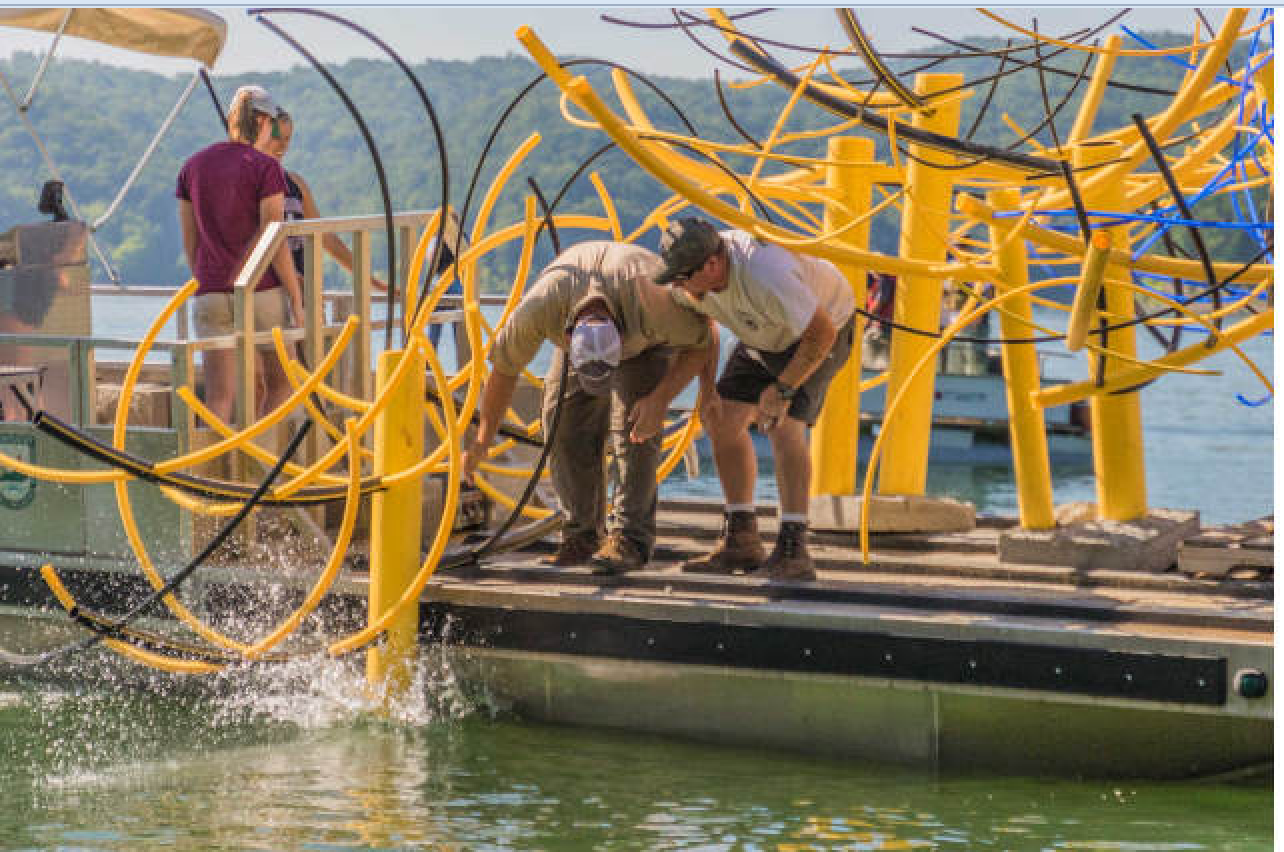February 2018, Vol. 245, No. 2
Features
A Whopper of a Tale That’s No Exaggeration

When Columbia Gas of Kentucky began looking for better ways to dispose of its surplus expired plastic pipe, some of its workers came up with a plan that turned out to be a fish story worthy of retelling.
As chance would have it the employees, who happened to enjoy recreational hunting and fishing, had become aware of a recurring problem the Wildlife Department had been experiencing with the structures it submerged to provide fish with feeding and spawning areas. The habitats were made of wood and tended to rot away after a few years.
The Columbia Gas employee’s suggestion – build them from expired plastic pipe instead.
“It turns out this pipe, unlike the Christmas trees or other wood items commonly used in the habitats, is pretty indestructible, like PVC pipe,” Herb Miller, the company president, told P&GJ. “The employees said, why don’t we donate that leftover pipe that would go into landfills otherwise?”
The decision turned out to be a win-win for the fish (and those who love fishing), as well as Columbia Gas of Kentucky and its parent company NiSource, which has long boosted a sustainability program that encourages smart environmental stewardship.
The donation of expired natural gas pipe is currently in use at Cave Run, an 8,270-acre lake in Daniel Boone National Forest in northeastern Kentucky, near the company’s 135,000-plus customer service area. It is a popular destination for boating, camping, fishing, hiking, hunting and wildlife viewing.
Wildlife biologist Tom Timmermann said the plastic pipe frees up forest workers from the never-ending cycle of replacing the old structures with more wooden pallets and tree structures. He said an earlier plan to switch to waterproof materials had been a non-starter.
“The problem was money,” Timmermann said. “Commercially available products are very expensive and budgets are tight. I can spend $500 on a single structure or I can build one out of gasline for basically the cost of an 80-pound bag of Quikrete.”
The need for fish habitats is no different than that for land animals, Timmerson added, but explaining the importance of such areas to people often presents a stumbling block, which makes the assistance given at Cave Run even more appreciated.
“It’s easier to understand rabbits can’t survive in a Walmart parking lot,” he said. “But it’s harder to get across that fish need places to spawn and reproduce as well.”
The Wildlife Department had been putting out wood structures for fish about 40 years – trees cut down so deer could feed on the resulting stump sprouts, for example – but now with the use of plastic pipe, which won’t have to be replaced, the time and money spent on those efforts can go into adding more fish habitats.
To better understand the scope of this undertaking, the department reported that since 2014 about 4,100 Christmas and cedar trees, 2,200 wooden pallets, 100 large cable spools, 800 large tree stumps and 50 concrete culverts have been used on the project.
“Even from a logistical standpoint, this gasline is allowing us to do more with the limited budget and people that we have,” Timmermann said.
For their part, Miller said Columbia Gas of Kentucky hopes to continue to participate. He said while the amount of expired pipe the company has isn’t really that great, with some units only being a foot in length, it’s good to see it going to good use rather than ending up at the bottom of a landfill.
“The fish love it and so, apparently, do the algae that fish feed on,” he said. That attracts larger fish, which attracts sportsmen. “It’s quite an interwoven structure once they wind it all around. It almost looks like someone’s intestines.”
So far, 63 gas pipe structures, which Timmerman described as resembling “Dr. Seuss trees” because of their resemblance to trees in the movie “The Lorax,” have been placed in the lake and there are plans to add more.
“This is a great program that our employees identified and brought forward,” Miller said. “It wasn’t some kind of top-down mandated program. It was a great idea, and all of the credit goes to them and not to me.” P&GJ
“Spotlight on Utilities” highlights some of the innovations and achievements of those in the business of providing natural gas to homes and businesses. If you have a suggestion for inclusion in the column, email mreed@gulfpub.com.





Comments